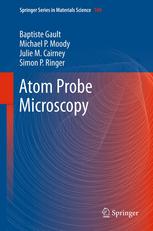

Most ebook files are in PDF format, so you can easily read them using various software such as Foxit Reader or directly on the Google Chrome browser.
Some ebook files are released by publishers in other formats such as .awz, .mobi, .epub, .fb2, etc. You may need to install specific software to read these formats on mobile/PC, such as Calibre.
Please read the tutorial at this link: https://ebookbell.com/faq
We offer FREE conversion to the popular formats you request; however, this may take some time. Therefore, right after payment, please email us, and we will try to provide the service as quickly as possible.
For some exceptional file formats or broken links (if any), please refrain from opening any disputes. Instead, email us first, and we will try to assist within a maximum of 6 hours.
EbookBell Team

4.1
20 reviewsAtom probe microscopy enables the characterization of materials structure and chemistry in three dimensions with near-atomic resolution. This uniquely powerful technique has been subject to major instrumental advances over the last decade with the development of wide-field-of-view detectors and pulsed-laser-assisted evaporation that have significantly enhanced the instrument’s capabilities. The field is flourishing, and atom probe microscopy is being embraced as a mainstream characterization technique. This book covers all facets of atom probe microscopy—including field ion microscopy, field desorption microscopy and a strong emphasis on atom probe tomography.
Atom Probe Microscopy is aimed at researchers of all experience levels. It will provide the beginner with the theoretical background and practical information necessary to investigate how materials work using atom probe microscopy techniques. This includes detailed explanations of the fundamentals and the instrumentation, contemporary specimen preparation techniques, experimental details, and an overview of the results that can be obtained. The book emphasizes processes for assessing data quality, and the proper implementation of advanced data mining algorithms. Those more experienced in the technique will benefit from the book as a single comprehensive source of indispensable reference information, tables and techniques. Both beginner and expert will value the way that Atom Probe Microscopy is set out in the context of materials science and engineering, and includes references to key recent research outcomes.